Here are the official rules of Solitaire as dictated in the most critical game rule books. Before you start learning the rules, know that Solitaire is a category of games, not the name of a single card game. But in 90% of the cases, people who are interested in the rules of Solitaire are interested in the rules of Klondike Solitaire, the most played and well-known Solitaire game in the world.
The Object of the Game with Solitaire
Solitaire is a group of card games primarily played in Solitary. The object is to solve a puzzle whereby cards are played according to the rules, in specific sequences, to the Foundation piles. When you manage to play away all cards to the Foundation piles, you win; you complete the game. When you can’t move any cards anymore during the game, the game ends.
Although there are thousands of variants, all Solitaire games are generally based on the above principle.
How to win Solitaire?
To win the game: the goal is to play all cards to the Foundation, which is located above the Tableau. All the foundations are built up by Suit, in sequences from Ace to King.
The Card Suits and Sequences
A deck of 52 cards is divided into four Suits of thirteen. In the Solitaire Rules, you see that the Ace is the lowest card which equals one. The King is the highest card available, equaling thirteen. Each Suit can be easily recognized by its symbol and color:
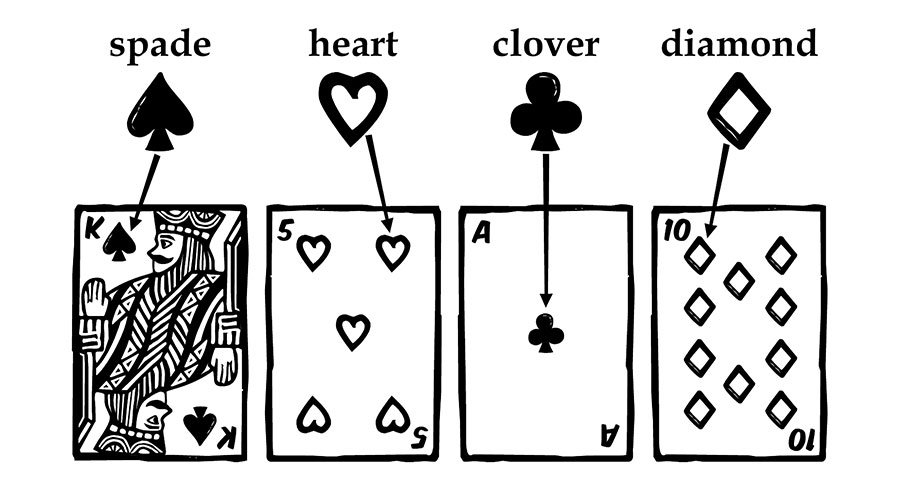
Solitaire Card Game Rules Terminology
The first thing that you need to do when playing Solitaire is to deal the cards according to the layout. The official Solitaire setup is necessary to commence the game. The layout consists of a Tableau, Foundation piles, a Stockpile, and a Waste Pile.
Tableau
The Tableau is the original name for the “playing field.” It consists of seven columns or rows. The topmost card of each row is face-up according to the Solitaire set up rules.
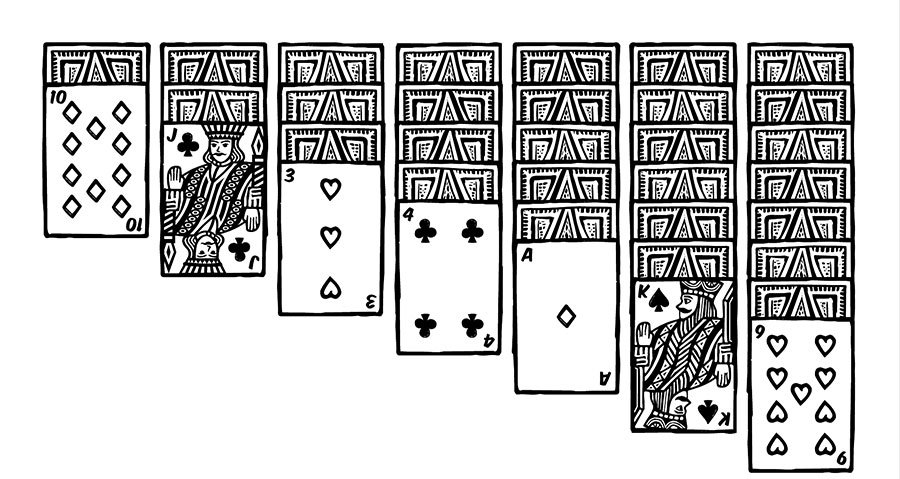
Stockpile
The Stockpile on the top left contains cards not yet in play. They are face-down until the next turn or deal. You can only play the top card. For example, in Draw 3, you turn three cards, but only the top card is available to play.
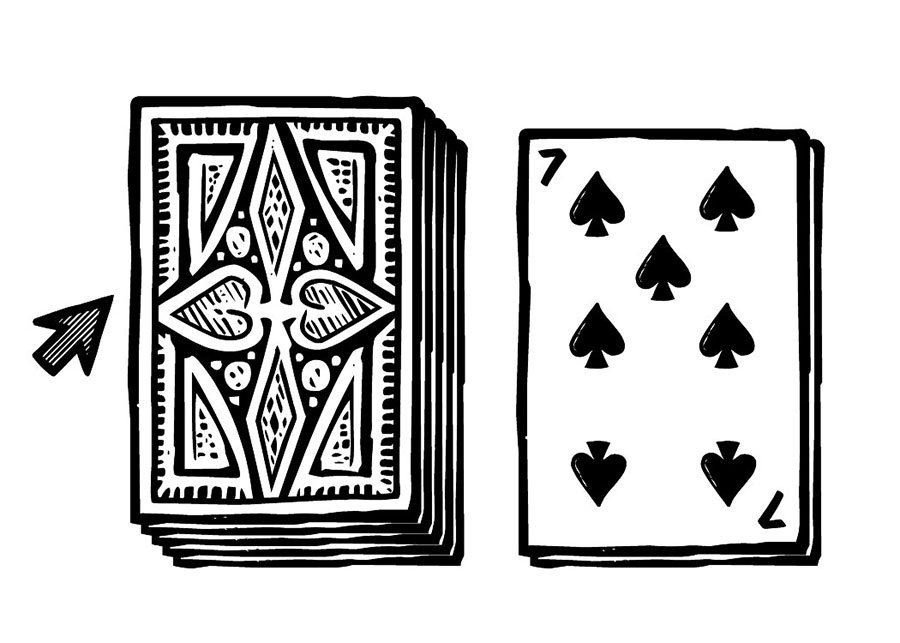
Waste Pile
The Waste Pile is in second place on the top left. This pile is where the dealt cards land. These cards are face-up, and the topmost card is available to play, either to the Tableau or the Foundation.
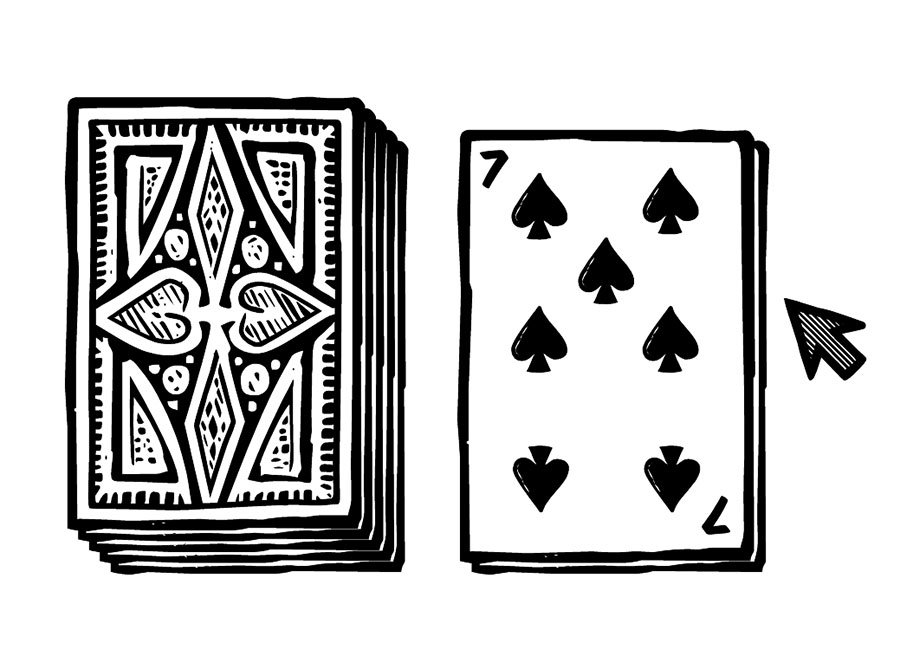
Foundation
There is a space reserved to build four piles on the top right. Each pile is a single suit starting with an Ace and ending with the King of each Suit. The goal of Solitaire is to place all 52 playing cards on the Foundation.
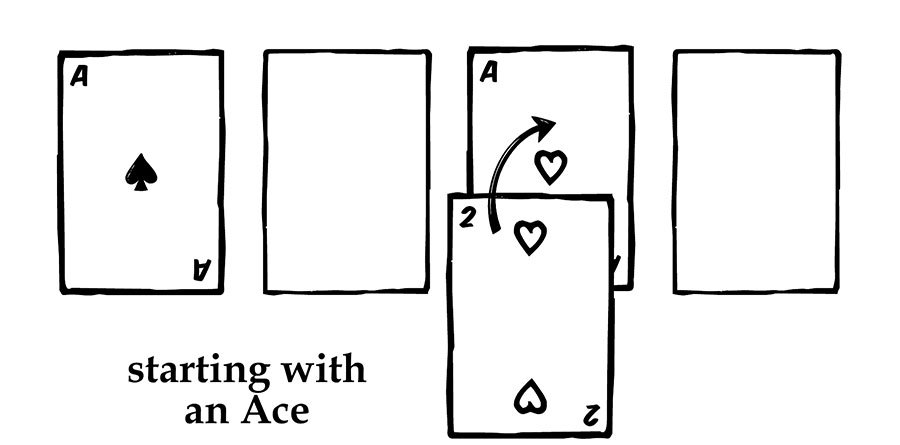
The cards on the Foundation are divided into four piles. Each pile must only contain a single suit. The pile must be stacked in the correct order starting with the Ace and building in ascending order to the King.

Moving Cards / Gameplay
When playing Solitaire, the rules allow you to move the cards to finish the game. The following moves are allowed:
Stockpile to Waste Pile
Two different rules can apply regarding the turnover of the card; one or three cards at a time.
- One card draw: In this case, you turn only one card at a time from Stockpile to Waste Pile. Often you can only go through the deck once.
- When the three-card rule applies, you turn three cards for each deal. The top card is exposed and ready to play, but the other two cards underneath it are blocked from play until you play the top card.
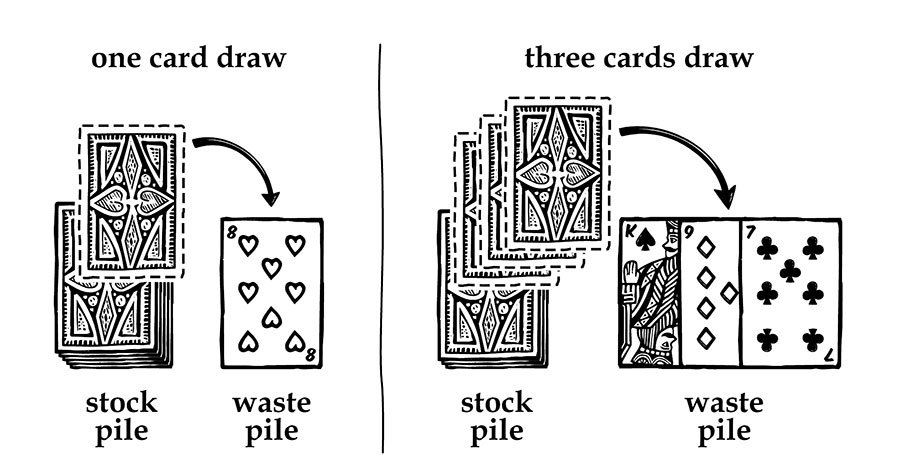
Waste Pile to Tableau
- According to the Rules of Solitaire, you can move the top playing card of the Waste Pile to the Tableau.
Direct from Waste Pile to Foundation
- When possible, you are also allowed to directly move a card from the Waste pile to the Foundation.
Tableau to Foundation
- According to the rules of Solitaire, you can move a playing card from the Tableau to the Foundation.
Foundation to Tableau (“Worrying Back”)
- In some Solitaire rules, you can return a card from the Foundation to the Tableau. In Solitaire terms, this is called “Worrying Back.”
Between the Rows within the Tableau
- Moving a card or multiple cards in a row to another row of the Tableau is provided according to the Rules of Solitaire: descending (high-to-low) card sequences in alternating colors. This will also expose new cards for play.
Empty Space
An empty space references a cleared row with no cards left in it. A space can arise when you move cards into other rows of the Tableau. You can only fill an empty space with either a single King or by moving a row that starts with a King.
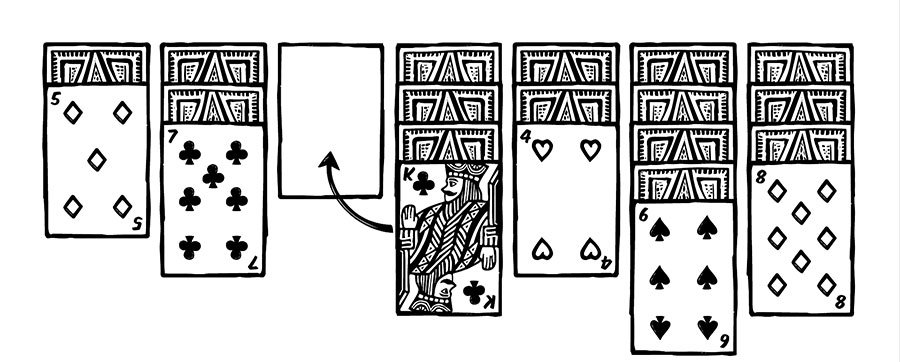
Building Rows on the Tableau
Moving cards to build rows on the Tableau is a big part of Solitaire. The rules of Solitaire state that each row should be built-in sequences from high to low (descending order) and in alternating colors (red, black, red, black, etc.)
Only the color of the Suit matters. The Solitaire rules allow you to move any number of cards between columns, even moving part of a row versus the entire row.
Different types of Solitaire Explained.
Contrary to what most people think, Solitaire is not a single game but a group of games with different layouts, setups, and rules. In general, the game’s object is similar: to get all cards onto the Foundation. The Solitaire Rules explained above officially belong to the three variants below. In addition to these variants, there are hundreds, perhaps thousands, of other Solitaire variants. Of these, we will describe the funniest and most curious ones in our Solitaire games section in the future.
Solitaire Rules Klondike
Klondike Solitaire is the most played Solitaire game in the world. It is often indicated with just the word “Solitaire.” The game is played with 52 cards, spread the layout over seven columns. You can move cards based on numerical or face value and color. For more information about Klondike read our page with the Solitaire Rules for Klondike Solitaire (explained in detail and easy to learn)
Vegas Solitaire Rules
Vegas Solitaire is the gambling Solitaire based on the standard Solitaire Rules of Klondike. Of note, Vegas scoring is utilized. Here you buy a deck of cards for $52 and get paid $5 for every card played to the Foundation. Please visit the Vegas Solitaire Rules page for more information on how to play Las Vegas Solitaire.
Casino Solitaire Rules
Casino Solitaire is just another name for Vegas Solitaire. The game is the same, and the scoring is identical as well. If you are interested in playing Solitaire for real money, read our step-by-step manual on playing Casino Solitaire.
Canfield Solitaire Rules
Canfield Solitaire is named after Richard Canfield, the Prince of Gamblers. It is said that he invented or played it in one of his Gambling Houses. However, the game we today call Canfield we play with the same rules as Demon or Fascination. For more information, continue reading about how to play Canfield Solitaire.
Gambling House Solitaire Rules
As stated before, Canfield Solitaire is known as the Solitaire with precisely the rules of Demon / Fascination. But as a gambling game, it was initially called Gambling House Solitaire, and that’s the game where Canfield Solitaire got its name. Please read our article about Gambling House Solitaire for the exact rules and betting structures.
That’s all for now on the basic Solitaire card game rules.
Advanced Solitaire Rules and Strategies
When you become a master at this great game, there are more advanced Solitaire playing techniques and strategies to learn. Many different types of Solitaire games have emerged through time to challenge players on each level.